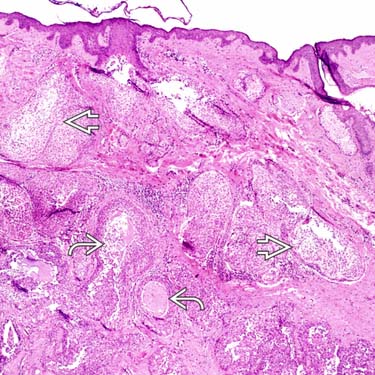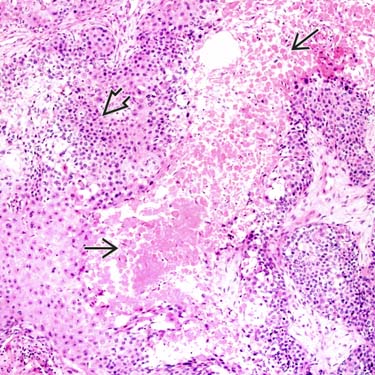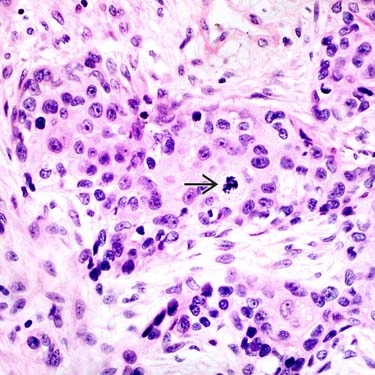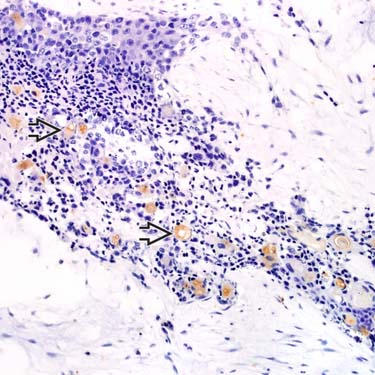
Low magnification of a hidradenocarcinoma shows a dermal-based, atypical, multilobular neoplasm with clear cell features
 and cystic spaces
and cystic spaces  containing mucinous material and cellular debris.
containing mucinous material and cellular debris.
Areas of squamous differentiation
 and prominent tumoral cell necrosis
and prominent tumoral cell necrosis  are present in this example of hidradenocarcinoma. Squamous differentiation is much less common than in porocarcinoma.
are present in this example of hidradenocarcinoma. Squamous differentiation is much less common than in porocarcinoma.
Infiltrative islands of tumor cells in hidradenocarcinoma show cellular atypia, with enlarged nuclei and prominent nucleoli. There is also an atypical mitosis
 present.
present.
CEA highlights numerous small ductal lumina
 and their contents in this example of an infiltrative hidradenocarcinoma.
and their contents in this example of an infiltrative hidradenocarcinoma.MICROSCOPIC
Histologic Features
• Mitoses often seen




Stay updated, free articles. Join our Telegram channel

Full access? Get Clinical Tree
















